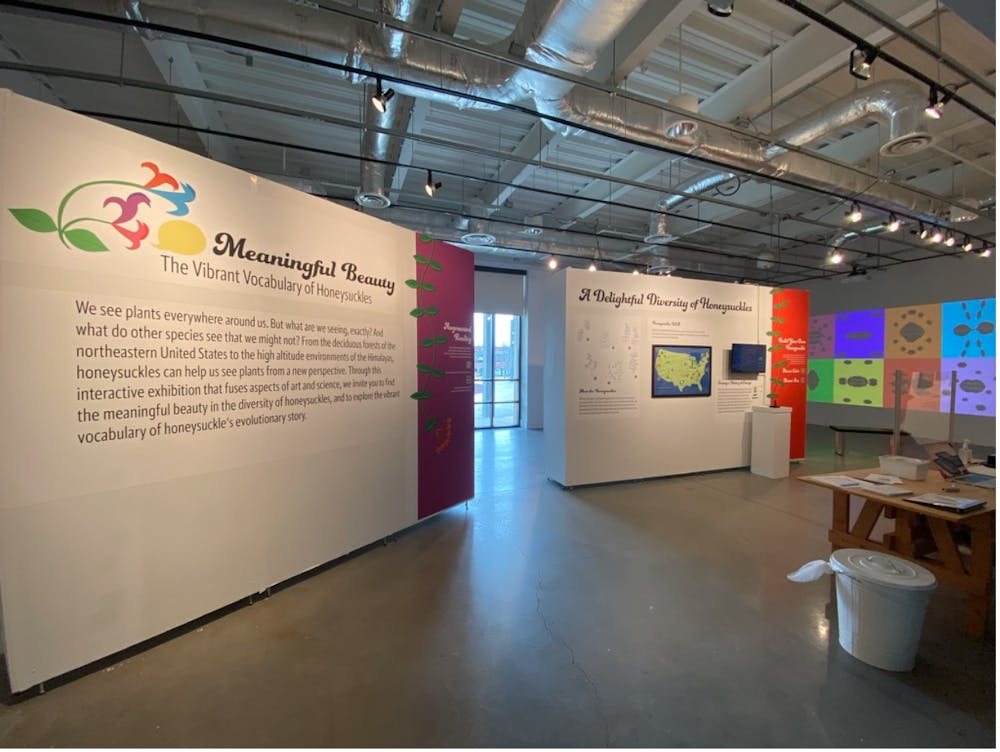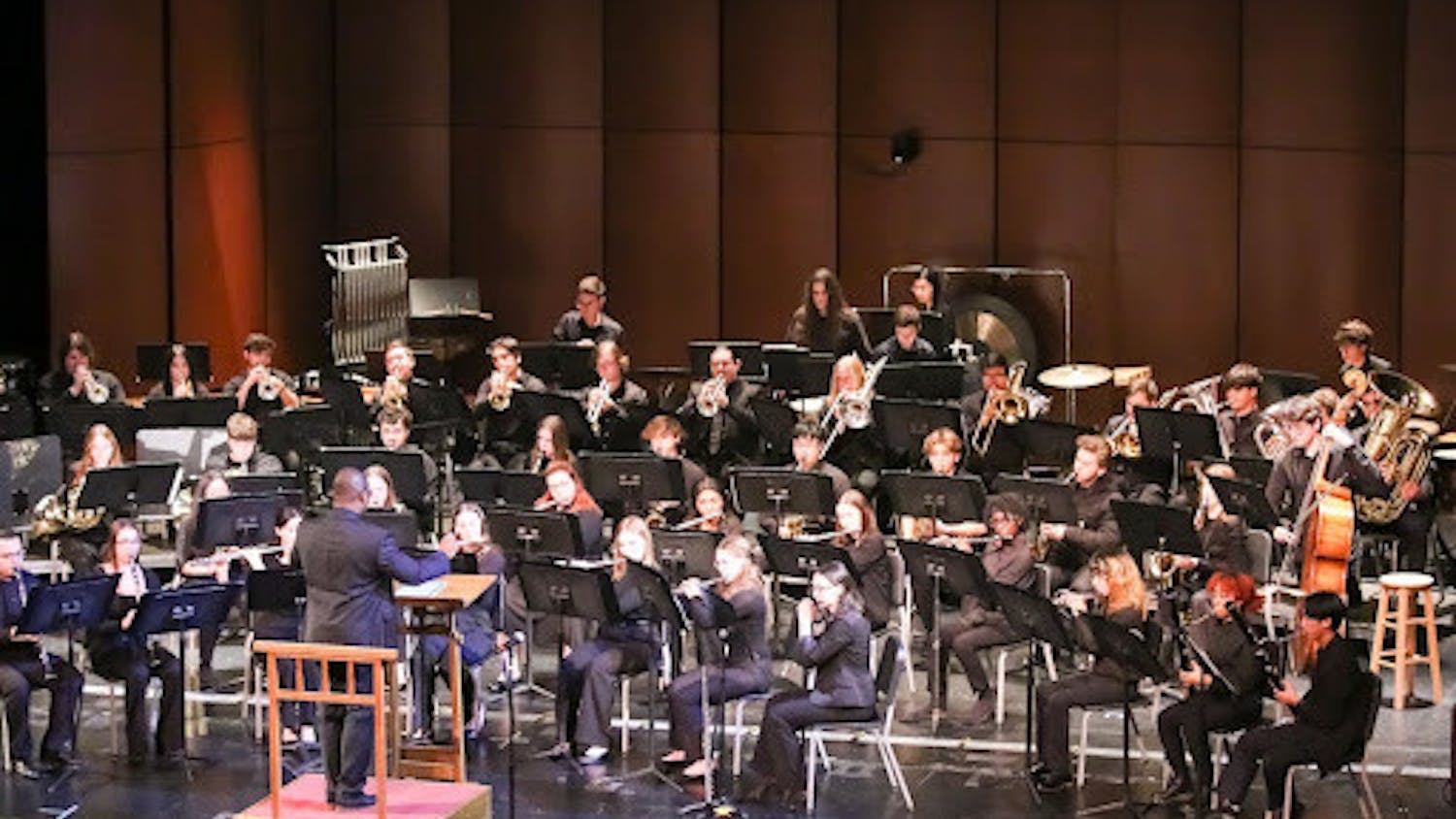By Talie Meza
Correspondent
The long-awaited exhibit, “Meaningful Beauty: The Vibrant Vocabulary of Honeysuckles,” finally opened to the public on Feb. 16 after approximately two years in the making. The exhibit ran from Feb. 16 to March 26 in the TCNJ Art Gallery.
“Meaningful Beauty: The Vibrant Vocabulary of Honeysuckles'' is an interactive art and research exhibition designed and created by College students, faculty and partners. The exhibit showcases a joint effort between the School of Arts and Communications and School of Science. A grant from the National Science foundation funded the project, which built upon findings in tandem from researchers and scientists from the College, Yale University and St. John’s University.
Honeysuckles are the central focus of the exhibition as they are good examples of how plants use fusion to change their form in response to their surroundings to better survive. Combined with interactive pieces and practical visual displays, attendees can explore the evolution of the flower. The exhibit makes use of various different media styles such as botanical illustrations, photography, laser-cut acrylic “herbarium specimens,” printed data visualizations such as maps and diagrams, projections, interactive screen-based displays and more to present the world and science of the honeysuckle.
“We are creating a space that offers a lot of different views of plants and suggesting that that’s okay,” said Wendy Clement, an associate biology professor at the College and a driving force behind the exhibit. “It extends an invitation to people saying ‘sure, maybe scientists see plants a certain way, but that’s not to say that we can’t learn from how other people perceive them.’”
One of the focuses of the exhibit is to showcase the evolution of the honeysuckle, in ways both visible and invisible to the naked eye.
“The artistic characteristics of the exhibit might exaggerate those features that people might see,” Clement said. “The evolutions and how they affect more than just visible differences, but [as] if it is accessible to a hummingbird or a bee.”
Chris Ault, an interactive multimedia professor, worked with his students last semester and into the summer workshopping concepts. Real progress began in fall 2021 when in-person classes resumed and students were able to use on-campus resources.
“In IMM, we talk a lot about designing user experiences, but in this case, it refers to a visitor experience. It’s the experience of someone moving through a space and receiving information,” Ault said. “You have to think about what they know coming through the door and what you’d like them to know when they leave. So it’s really a question of designing content that conveys the scientific information in a compelling, engaging and fun sort of way.”
Haley Wright, a junior interactive multimedia student, worked on the project over the summer through the Mentored Undergraduate Summer Experience program, referred to as MUSE, as well as in the current spring semester.
“On the design side, we were really focused on creating a cohesive visual language and an approachable overarching narrative or tone of voice that would help visitors foster a greater appreciation of plants throughout their visit.” Wright said.
The main focus IMM held for the project, according to Wright, was to create an experience that was not exactly like an art or natural history museum exhibit. They wanted to merge the two concepts and create a fun, interactive exhibit of its own genre.
Two workshops were held during the exhibit’s duration led by artist & educator Heather Diacont Rinehart. She gave brief lectures about the history of botanical study and instructed two different art projects for participants to engage with to deepen their understanding of plant life.
“Collaboration between different disciplines is really special,” Wright said. “This project could encourage other departments to collaborate with each other. It encourages people to think about nature from a different perspective. There are a lot of lessons we can learn from plants, like looking past appearances.”
The exhibition concluded in the TCNJ Art Gallery on March 27 and from there, will move to Harvard’s Arnold Arboretum in Boston and reopen on June 3 for public viewing.







